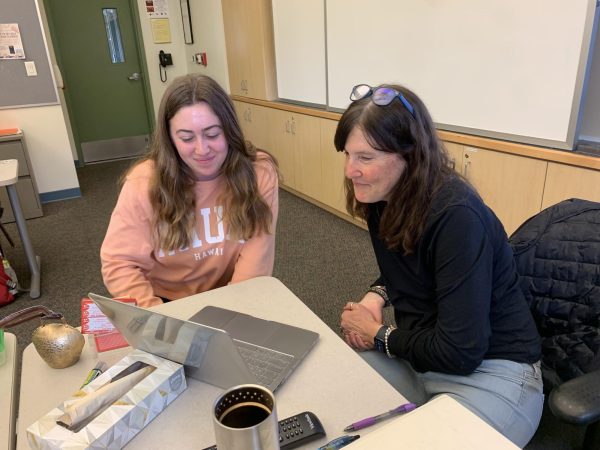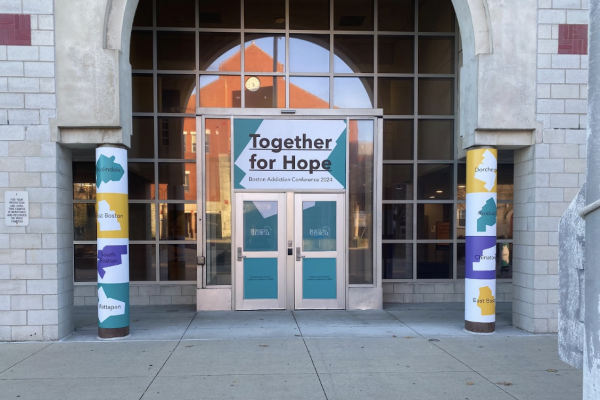He also mentioned that some residents refused to evacuate or insisted that they would stay to protect their homes. This is where it could get dangerous.
“
I saw an area I knew quite well just burning. It really changes your perspective.
— Daniel Engovatov
“We were just trying to reach out to people and remind some of the homeowners that were preparing regular garden hoses to try to defend their property, that it will not help, it really gets out of control’,” Engovatov said. “People have been caught in multiple fires here and would not know where to go, especially in the hilly areas we have around here.”
According to Engovatov, the fires would feel different if they were close-by. Engovatov recollected that he had seen areas that he knew, even places in which he had gone biking, in flames.
“When it’s close to home, it’s always impressive to see,” Engovatov said. “We were driving at night and saw an area I knew quite well… just burning… it really changes your perspective.”
Even though wildfires in this area, at least as of now, are less dangerous than in other places, they can sometimes get out of control quickly. Especially if one would travel farther out, it could be intense. Engovatov explained how he was out on patrol with his colleagues who had extended family in the area. At the time, they were concerned about the safety of a community in that area.
“We were quite afraid that it may be gone in a few hours if the wind changes,” Engovatov said. “It puts things in perspective, it was there for a hundred years and it may be gone the next day.”
While the fires here are still somewhat manageable, the total number of wildfires in California has seen a massive jump in the past three years. Since the year 2017 (except 2019, which barely had a fire season), both the number of acres burned and the number of fires has increased dramatically (see chart below). Why? Scientists point to climate change as the answer.
According to scientific papers by the New England Journal of Medicine and Stanford scientists, the recent climate trends and arid conditions have contributed directly to the ongoing rise in wildfire activity. The research showed that they would not stop following this trend unless measures would be taken against it. This means that, unless it is stopped, more wildfires will occur, and more toxic smoke will be pushed into the atmosphere.
However, climate change and dry conditions aren’t the only causes for the recent spike in wildfires.
Ron Johansen is a retired firefighter who worked at Alameda County Fire department, San Francisco Fire department, and as a helicopter flight-medic crew-chief. He had fought in many fires, including the infamous Oakland Berkeley Hills Firestorm. Due to his extensive experience, Johansen knows the wildfires’ cause and their current destructive nature.
Johansen believes that climate change and global warming play a part in the recent significant increase in fires. However, he emphasized that it only plays a role alongside other causes.
One of the causes being the bark beetle. The beetle burrows and consumes the forest’s tree bark, weakening the trees and taking away their best defense against intense fires. Johansen explained that a tree’s bark is resistant to fires since it prevents the tree’s moisture from escaping, making it harder to burn. Without the bark, water escapes more easily, allowing the fire to dry up the tree and eventually burn it. If forests infested with bark beetles are left untreated, then a forest fire in that area could spread faster, cause more damage, and be harder to contain.
In addition to the bark beetle, there have been many recent droughts over the past years that have hit California hard. These shortages further challenge the trees since water is more limited. This causes the trees to dry up and allows the fires to burn the forests more easily. But issues in nature are not the only causes.
“There’s a lot of blame to go around. Lumber companies, politicians, and people,” Johansen said.
He thinks that these companies and politicians are unwilling to spend their money to care for the forests.
“There are millions of dead trees in the forests. They need to be cut down and removed because they are dry and tinder for the fires,” Johansen said.
According to Johansen, cleaning up the forests and clearing all of the dead trees is taxing but needs to be done. The dead trees dry up since they do not preserve their moisture anymore, and they are perfect for feeding fires.
“They’re dead and they’re dry. It’s like putting matchsticks out in the forest,” Johansen said.
Cleaning the forests should be the responsibility of the many lumber companies in California, who have the most contact with Californian forests. He also believes that the government should be paying more attention to the woods, as he thinks that the forest’s health is essential.
From Johansen’s point of view, the amount of devastation caused by the fires was immense. They hurt many forests, animals, and especially homes and people.
“It’s a very sobering sight to see the level of destruction and level of loss that people have to experience in these wildland fires as well as loss to nature,” Johansen said.
“
The fire was burning so hot, so fast that it sounded like there was a jet engine roaring right next to you,
— Ron Johansen
He also further explained his experience with the devastating Oakland Berkeley Hills Firestorm. Johansen recounted how he had been an hour away when the fire had started and that, by the time he had arrived to help, 700 homes were already burning.
“I got there at about one o’clock in the afternoon, and it was so much smoke that the street lights were all coming on because there was so much smoke in the air. It was like the middle of the night,” Johansen said. “I couldn’t tell if it was one in the morning or one in the afternoon.”
It had been an incredibly frightening experience for Johansen, who had helped create a blockade of houses to create a firebreak and help stop the onslaught of flames.
“All I remember is the fire was burning so hot, so fast that it sounded like there was a jet engine roaring right next to you, it was so loud,” Johansen said.
He and his team were able to help one woman evacuate. She was panicking; she tried to get all of her pets into her car and kept going into her house to get more things as it was already physically burning. Johansen’s crew had taken the woman into the fire engine as she would not drive away, but it was too late to save her home.
“I remember the captain telling her, ‘Get in your car and leave now or you’re gonna die’. And she just started screaming at us to save her house. We didn’t have any water so we couldn’t do anything,” Johansen said. “We couldn’t save her home. It was just surreal to listen to this and see the panic on her face as she watched her house burn to the ground.”
This woman was one of the thousands who have lost their home in the still-ongoing, catastrophic California wildfires. These fires are getting worse and will not stop getting worse until changes are made. Johansen urged people to help fix these issues by pleading with politicians to remove the millions of dead trees and allow for controlled burns in the offseason. According to Johansen, this would be very beneficial to the health of the forest. He also asked people to make sure that they fireproof their house by removing quickly burnable things such as dry vegetation from their property and utilizing tile roofs instead of tar paper ones.
“There’s a lot of blame to go around and most people will take one side or the other. They won’t take responsibility and say it’s all of us. We’re all responsible,” Johansen said.



























![IN THE SPOTLIGHT: Junior Zalie Mann performs “I Love to Cry at Weddings,” an ensemble piece from the fall musical Sweet Charity, to prospective students during the Fine Arts Showcase on Wednesday, Nov. 8. The showcase is a compilation of performances and demonstrations from each fine arts strand offered at McCallum. This show is put on so that prospective students can see if they are interested in joining an academy or major.
Sweet Charity originally ran the weekends of Sept. 28 and Oct. 8, but made a comeback for the Fine Arts Showcase.
“[Being at the front in the spotlight] is my favorite part of the whole dance, so I was super happy to be on stage performing and smiling at the audience,” Mann said.
Mann performed in both the musical theatre performance and dance excerpt “Ethereal,” a contemporary piece choreographed by the new dance director Terrance Carson, in the showcase. With also being a dance ambassador, Mann got to talk about what MAC dance is, her experience and answer any questions the aspiring arts majors and their parents may have.
Caption by Maya Tackett.](https://bestofsno.com/wp-content/uploads/2024/02/53321803427_47cd17fe70_o-1-1200x800.jpg)
![SPREADING THE JOY: Sophomore Chim Becker poses with sophomores Cozbi Sims and Lou Davidson while manning a table at the Hispanic Heritage treat day during lunch of Sept 28. Becker is a part of the students of color alliance, who put together the activity to raise money for their club.
“It [the stand] was really fun because McCallum has a lot of latino kids,” Becker said. “And I think it was nice that I could share the stuff that I usually just have at home with people who have never tried it before.”
Becker recognizes the importance of celebrating Hispanic heritage at Mac.
“I think its important to celebrate,” Becker said. “Because our culture is awesome and super cool, and everybody should be able to learn about other cultures of the world.”
Caption by JoJo Barnard.](https://bestofsno.com/wp-content/uploads/2024/01/53221601352_4127a81c41_o-1200x675.jpg)














